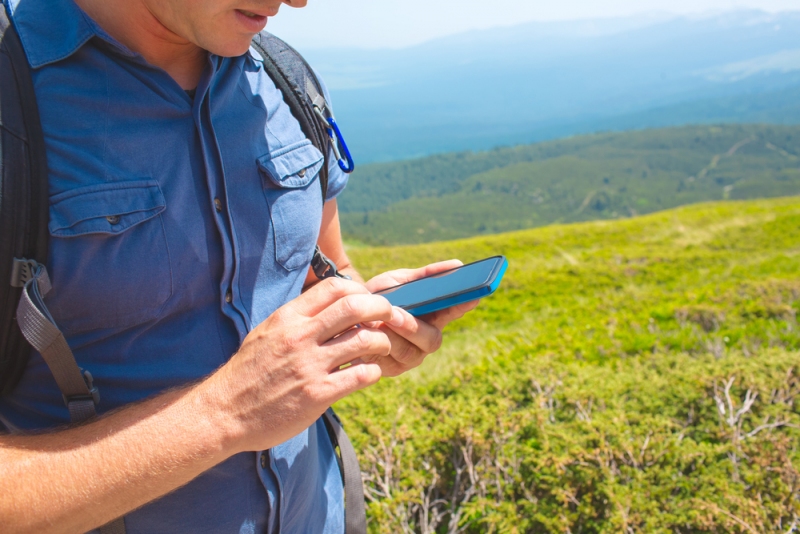When we’re not in work, at school, or running tons of errands in our daily lives, many of us like to escape to the outdoors. Camping, hiking, picnicking, fishing, or even taking light walks are an excellent way to decompress. Getting outside just a little bit each day is shown to increase brain function and overall health. But most Americans are not outdoor explorers, backpackers, or park rangers. More Americans live in cities than in rural areas, and even those in the rural parts of the United States rely on modern appliances.
There’s no reason that anyone who wants to spend significant time in the great outdoors shouldn’t get to do so. But is it possible to do without forsaking all modern technology? Absolutely. Smartphones in particular can be assets in these scenarios. Camping and hiking may be about getting in touch with nature, but there’s nothing wrong with using a bit of technology on the trail. After all, everyone on the trail is using some kind of human technology. Whether you draw the line at boots and matches or at GPS units and smartphones is entirely up to you. We’re here to help you, not to question your commitment to the outdoor life!
To that end: we have some good news. There are plenty of practical applications for your smartphone on a camping or hiking trip. However, you should know the drawbacks as well–and be prepared to counter them.
How a smartphone can help you
First, let’s talk about the usefulness of your smartphone on the trail. Obviously, being able to quickly access the internet can be helpful in a lot of situations. But you should also consider your phone’s ability to use GPS functions even when internet service is not available. You can download maps of the region you’ll be in ahead of your trip, then use location features even after you’re beyond the reach of the internet. There are also a lot of useful apps for hikers–like AllTrails, which acts as a guidebook and allows you to track your progress on the trail in real time.
How to make your phone most useful
So what do you need in order to use your phone in these ways? For starters, of course, you’ll need the right device and network. Specialists who run AT&T Stores in Colorado tell us that you should speak with sales associates and describe specifically what you intend to do with your phone. Talk to them about where you’re going and check coverage maps. You can also check out forums and ask other hikers and campers about what kind of cell service they got when they were out in the spots you’re planning to visit. Back at the store, purchase a tough, waterproof case for your phone–you don’t want the dangers of the trail to do in your valuable device!
Your phone needs power, of course, but camping stores can help you there. You’ve probably seen portable external batteries for cell phones before, and there are many products that are designed with campers and hikers in mind. Keep in mind that these will need to be charged ahead of time, and you can’t use them forever. For longer trips, you can consider small backcountry power generators that use hand cranks, solar panels, and other methods to give you power on the go.
Don’t totally rely on your phone
A word of warning: no matter how carefully you protect your phone, you’ll need to be able to survive without it. Your phone can be a big help on the trail, but it shouldn’t be your only lifeline. You should have a map and a compass and know how to use them, even if you’re planning to use your phone’s GPS instead. And you should know your outdoor skills without having to search Google!
If you don’t use your phone as a crutch, though, it can be a very valuable tool on the trail. And there are plenty of ways to ensure that your phone stays safe and useful as you travel through the backcountry. Good luck!
































No Comments
Leave a comment Cancel